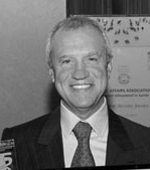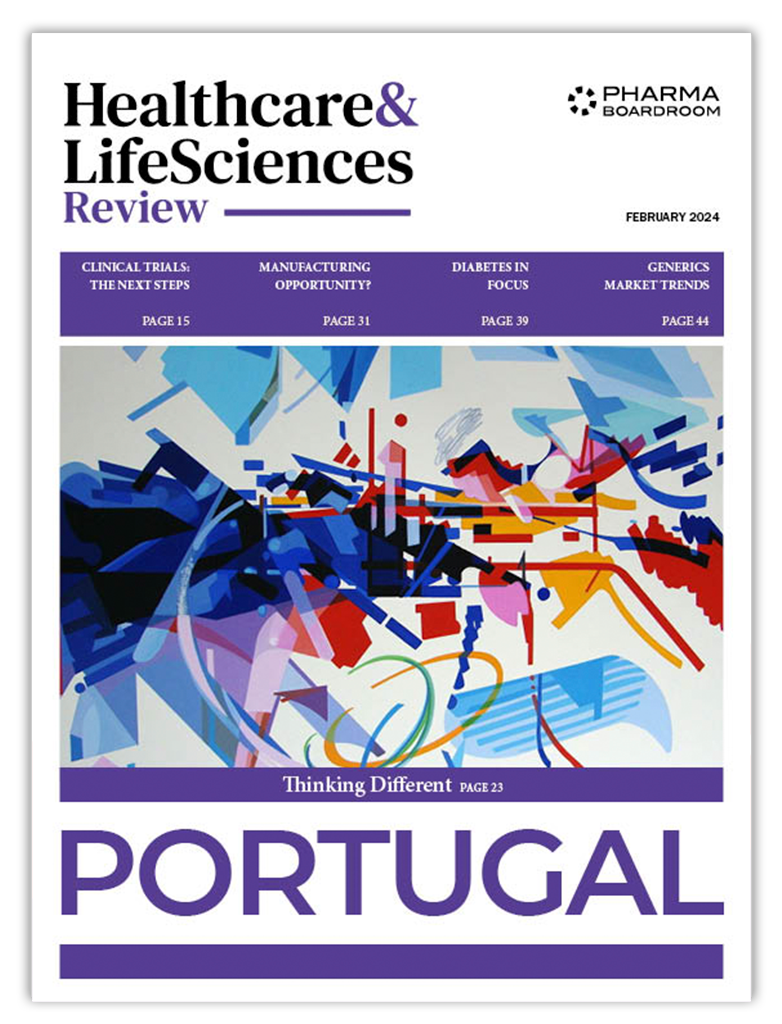Novo Nordisk is one of the very few pharmaceutical multinationals that has such a strong focus on one therapeutic area. Although the company is now diversifying, diabetes remains its leading cause. Could you give us a brief overview of the evolution of diabetes in your country compared to the other European markets?
Currently, at least 40% of the people suffering from diabetes (mostly the Type II form of the disease) do not know it. This trend is not specifically Italian, and a similar amount of un-diagnosed type II diabetes cases can be noticed all over Europe – but Italians tend to communicate strongly about problems compared to their European counterparts.In Italy, 2, 5 million people are currently being treated but there is no doubt that another million is still undiagnosed. This will affect the public health expenditure in the coming years, with increasing amounts dedicated to solving all diseases related to diabetes affecting different parts of the body such as heart, eye, kidney and foot. For this reason, the current approach has to be reversed, and much more has to be done in terms of prevention and awareness-raising, in order to be able to diagnose the disease before curing it.Therefore, all the players involved have to work together – starting from the Government and the pharmaceutical companies, but also the medical and patient associations and of course the citizens themselves, who have to become aware that diabetes is one of the biggest causes of death in the world but that it can be very successfully treated when diagnosed at an early stage.If the approach to fight diabetes does not change, WHO estimate the number of affected people worldwide will increase from the present 171 million to 366 million by 2030.
Novo Nordisk has always been very active in launching and sustaining awareness-raising campaigns. In this context, the agreement signed in 2006 implementing an official collaboration with the Italian Government on the DAWN program is a historic step – for the first time, a pharmaceutical company managed to involve the Government in an awareness campaign. How challenging has it been to convince all the stakeholders and what are the results of this agreement?
When working with pharmaceutical companies, the Government usually expects to be asked for more money, better pricings, or a new registration frame. Therefore, the Italian Government was surprised when Novo Nordisk explained that the DAWN program is only aimed at helping citizens to understand diabetes and showed all the programs that are being put together by the company, like the Changing Diabetes worldwide campaign. We had to show that we were not asking any funding, but just seeking the opportunity to work together with institutions and be able to communicate about the importance of early diagnosis, the possibilities to cure the disease and to live with it.The Prevention and Communication Department of the Ministry of Health really understood Novo Nordisk’s ambition to help the Italian “Ministero della Salute” to become the first Ministry of Health in the world partnering with a private company with the aim of helping patients as well as reducing public expenditure dedicated to diabetes and other related diseases through better prevention.It was not easy at the beginning, but the synergies with the Government are now extremely successful, with meetings on a regular basis and presentations overseas in order to illustrate the Italian case as a prime example of Public-Private partnership in the Health sector.
To what extent is a niche company like Novo Nordisk, which is very focused on products to treat diabetes, affected by the current Government measures to cut healthcare spending?
The general impact of price cuts on the market has to be distinguished from its effect on the specific diabetes sector.From a general point of view, price-containment policies started in Italy in the nineties and this trend has continued until now. As a result, an important number of multinationals reduced the number of the launches of new products in Italy in the past year, knowing that it would alter their pricing and their prescription levels.Novo Nordisk is relatively protected in its segment: diabetes, being a chronic disease, cannot be exposed to specific pricing measures. In the past years, the company just followed the general trend and experienced the same price cuts as other companies – such as claw-backs, pay-backs (which amounted in 2007 to about 10% of the initial price) and limitation of prescriptions.In addition, all the products that grew more than 10% of their specific segment in the previous year – such as Novo Nordisk’s oral anti-diabetes – were exposed to an additional 10% price cut. Such policies obviously reduce the competitiveness of the most successful companies by hitting their profits.
What is the relative importance of Italy in terms of revenues and growth for Novo Nordisk worldwide and which are the main growth drivers of the Italian activities?
Novo Nordisk Italy was born in 1989. The company is still young, but employs 270 people and is the 4th European affiliate of Novo Nordisk Group in terms of turnover.The 2007 turnover amounted to 175 million Euros – the most important segment (68% of turnover) being diabetes, followed by haemophilia (19%), and growth hormones together with hormone replacement therapies (13%). Out of the diabetes segment itself, 74% of turnover is generated by insulin products and the remaining 26% by oral drugs and administration systems such as needles and pens.In the last few years Novo Nordisk Italy grew at an average of +3%- but taking out all the price cuts this average would be closer to +8%. The company keeps growing faster than the market (+7% in 2007 against -2% for the market), and is forecasting a double digit growth for the coming years.In order to fuel this growth, it is very important to work together with authorities and associations, helping them with scientific programs in order to diagnose more patients.But of course, the second main activity carried out by the company is the development of new products. For example, 70% of Novo Nordisk Italy’s current turnover, in insulin segment, is fuelled by new products – the so-called modern analogue insulins. In the coming years, this ratio is going to increase up to 100%, in the scope of eliminating human insulins and only using modern analogue insulins as the best treatment for our patients.
With the current growth of diabetes among the population and the experts’ prediction is that it will only get worse towards the future, many other pharmaceutical giants such as Sanofi Aventis, Lilly and Merck are focusing on this therapeutic sector. What is Novo Nordisk’s strategy to maintain its leadership in this niche area?
Novo Nordisk does not feel preoccupied or especially at threat, as it has nothing to learn from the other companies, and is the only one able to offer all the products that can treat every kind of diabetic patient – basal insulin, rapid insulin and pre-mixed insulin.In this context, the only risk for Novo Nordisk is to rest on its laurels and forget that there is always room for improvement. In order to remain the most competitive company in the market, offering the best products to improve the life of diabetic patients, we need to work with all the stakeholders, understanding each other’s needs and clearly stating the objectives that we want to reach together.
Do you feel that today your field force is as enthusiastic as you about working for Novo Nordisk?
Novo Nordisk’s Italian sales force is young, enthusiastic and deeply passionate about treating diabetes – I never saw such a passion in other companies. My job is to reinforce this enthusiasm and help the employees to spread their passion around them, in order to successfully push our products forward in the market.Starting my career as a salesman too, I learnt that self-motivation is the most important thing to succeed. Therefore, when selecting new Rep’s, the company strongly focuses on the personality of the candidates, looking at the persons more than at the technicians. We need to lead people through their high level of commitment and empowerment and it required a shared frame of values between the individual and the Company. This is the only key to retain the best people.The founder of the company had a special motivation to try to improve the life of diabetic patients: he was a Nobel Prize Laureate in Medicine and his wife, Marie, was diabetic. Therefore, when a molecule was discovered in Canada to cure the disease, he travelled to Toronto and asked for the permission to industrially produce the insulin. Today, the company’s values are still based on this great act of love: the ability to always put the patient at the centre of all the actions has never been lost at Novo Nordisk.
As a former salesman, starting at entry-level before reaching top-management positions, do you think that such a “dream come true” career is still possible today for young people having the same ambitions as you had?
The environment has changed a lot, but it is still possible to start from the bottom and reach the top, with self-motivation and passion. I believe that, in order to succeed, one has to keep doing things as he would like things to be done for himself – not having in mind that he is working for the company.Being a good sales representative is the main step to understand everything about the pharmaceutical industry. As a result, a company cannot be successful if its strategies are elaborated by managers with no experience on the field. For this reason, Novo Nordisk offers the opportunity to start as sales representative before getting any higher responsibility and would never hire a product manager that has no experience on the field.
You gave us your strategy to go upscale, what is your recipe to stay on top?
The first ingredient is motivation. When waking up in the morning in a disastrous mood, I immediately switch to a positive mode, as if each day should be the best day of my life.The second is energy. Leading an organization requires a lot of work aimed at pushing other people’s energy up to the level that is necessary to drive the company.The last element is the ability to interact with the employees, creating productive synergies and making them work with their boss instead of working for their boss.







